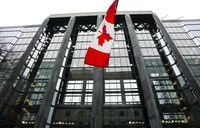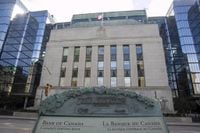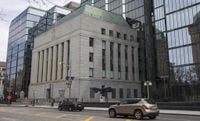As the Bank of Canada prepares to announce its latest interest rate decision, economists are divided on whether the central bank will continue its streak of rate cuts or hold steady at the current rate of 2.75%. This pivotal decision comes amid a backdrop of economic uncertainty influenced by a tariff war with the United States and recent inflation data.
On April 16, 2025, the Bank of Canada is set to unveil its decision, which follows a series of rate reductions over the past year. Since June 2024, the central bank has lowered the key interest rate from 5% to 2.75%, marking a significant easing of monetary policy aimed at stimulating economic growth.
In its most recent meeting in March, the Bank of Canada cut the rate by a quarter of a point, reflecting its ongoing strategy to respond to economic conditions. However, the current situation presents unique challenges. The latest statistics from Statistics Canada reveal that inflation has slowed to 2.3%, providing some relief but also complicating the bank's decision-making process.
According to a survey conducted by Reuters, 60% of economists anticipate that the Bank of Canada will maintain its rate at 2.75%, while the remaining analysts predict a further decrease of 25 basis points. This split opinion reflects the uncertainty surrounding the economic impact of the ongoing trade dispute with the U.S., which has created additional pressures on Canada’s economy.
The Bank of Canada has expressed concerns about its ability to manage the economic repercussions of the tariff war while also addressing domestic inflation. "We cannot manage simultaneously the economic repercussions of a tariff dispute with the United States and rising prices due to the trade war," a representative from the Bank stated, emphasizing the complexity of the current economic landscape.
As the announcement approaches, market analysts are closely watching the situation. The division among economists highlights the unpredictability of the central bank's next move. Some experts, like those at Desjardins, believe that the Bank will opt to keep the rate unchanged to preserve its options amid the potential for further economic turmoil. They argue that the central bank should "conserve its ammunition in anticipation of the impending trade mess with the United States."
The decision will be significant not only for the financial markets but also for consumers and borrowers across Canada. Lower interest rates typically translate to reduced costs for mortgages, credit lines, and auto loans, providing a boost to household spending. Conversely, a decision to hold rates steady could signal a more cautious approach in light of the uncertain economic environment.
As the clock ticks down to the announcement, the stakes are high. The Bank of Canada governor will hold a press conference shortly after the decision is made, providing insights into the rationale behind the chosen course of action. This transparency is crucial as it helps to set expectations for future monetary policy and economic conditions.
The upcoming decision is not just about numbers; it reflects broader economic realities that affect everyday Canadians. As the Bank navigates through these turbulent waters, the implications of its decisions will resonate throughout the economy.
In conclusion, the Bank of Canada faces a critical juncture as it prepares to announce its interest rate decision. With a divided consensus among economists and the complexities of external economic pressures, the outcome will be closely scrutinized by all stakeholders. The balance between stimulating growth and managing inflation remains delicate, and the central bank's next steps will be pivotal in shaping Canada's economic future.




